Detta blogginlägg finns endast på engelska.
This blog post is originally written by Parans Partner lumenomics, US, and could be read HERE.
All courtesy to lumenomics.
A conversation with Parans' Fredrik Johansson.
At lumenomics, we talk a lot about the values of daylight in buildings and designed spaces. However, daylight’s ability to impact occupants isn’t just limited to buildings, but to infrastructure and other spaces that people use and depend on. That’s what makes products like Parans so exciting to work with. With its ability to bring daylight hundreds of feet into interior spaces far away from the sides and tops of buildings, Parans has made a name for itself, taking daylight further than ever before.
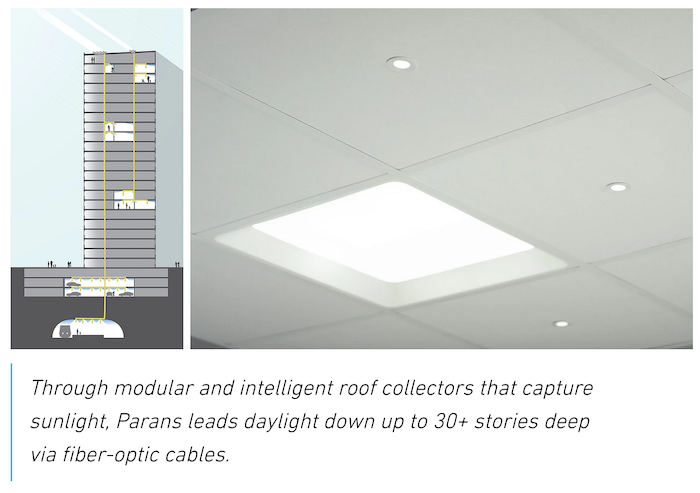
From office spaces to hospital rooms, Parans capacity to bring sunlight to the most impossible to reach places has changed designs around the world. It’s not just buildings whose designs they’re changing though, but infrastructure like tunnels and underground parking garages. To learn more about how Parans is trailblazing new frontiers with daylight, we chatted with Parans’ Senior Vice President of Sales & Marketing, Frederik Johansson, about the product and its exciting new applications in infrastructure.
LU: Hey Fredrik, thanks for joining us!
Thanks for having me!
LU: Of course! So, let’s kick this off. Can you tell me a little bit about Parans?
Parans is a Swedish company that was started in 2003 to provide sunlight in every room. What we do is lead natural sunlight deep into buildings far away from windows through fiber optic technology. We make sunlight an indoor experience when there is no possible access to the sky. Any building. Any floor. Any room.
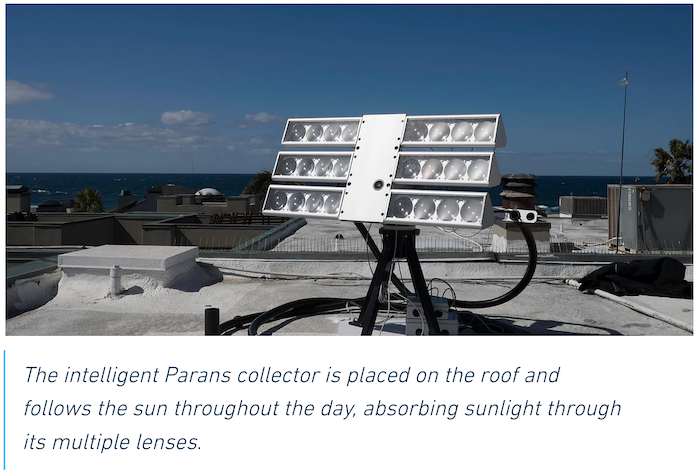
LU: That’s awesome! So, it seems like Parans typically used in more traditional interior spaces, is that correct?
That is correct. We do a lot of different types of lighting projects in traditional buildings. Still, we work in really any interior space where people spend a lot of time, and skylights and windows are not a possibility. For us, it’s great for us to be able to influence the way these places can utilize and transform unused space into a profitable area.
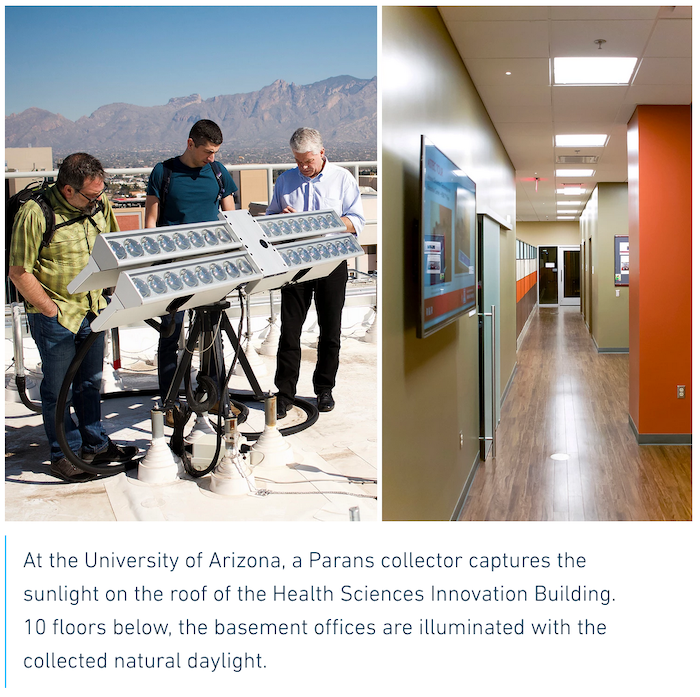
LU: Parans has a very intense focus on natural daylight. How does daylight influence your designs?
First and foremost, we are looking at the health benefits when we design anything. 90% of our time is spent indoors, regardless of where we live, so we want to make sure that we can have a positive effect on occupants’ alertness, their productivity, and their sleep patterns- unleashing all the positive benefits that come with proper exposure to full-spectrum sunlight. With Parans, they have an opportunity with our flexible and thin fiber-optic cables to lead and direct the sun exactly where they want it to be. It opens up more bold possibilities for how buildings and other spaces can be designed.
LU: I wanted to talk about a recent project of yours with the Rhijnlands Tunnel in the Netherlands. Can you tell me about that project and how it got started?
Of course! The Rhijnlands Tunnel is an infrastructure project being built about 30 minutes outside of Amsterdam in the Netherlands. A consortium of semi-government organizations representing the south province of Holland contacted us. They were building a new transportation tunnel and wanted to do something special and innovative. They were looking to disrupt how they build tunnels in the Netherlands by combining artificial light with natural light.
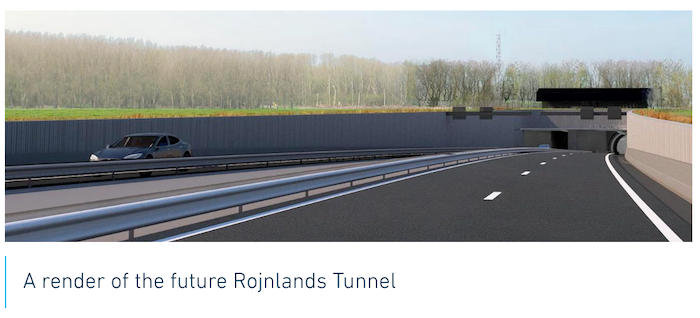
LU: So, what is Parans’ role in the project?
We’re designing a Parans lighting array to facilitate a smooth transition for drivers entering the tunnel. As a driver entering a tunnel from the outside, you’re going into this sort of black hole, and sometimes that can create a lot of contrast, which could restrict visibility and result in accidents. You really need sufficient light when entering that first part of the tunnel to maintain visibility and safety. So we’re going to combine artificial light with natural daylight from Parans to match the light conditions inside and outside the tunnel- reducing the contrast while traveling between zones, making transit safer for drivers, and hopefully reducing accidents in that area.
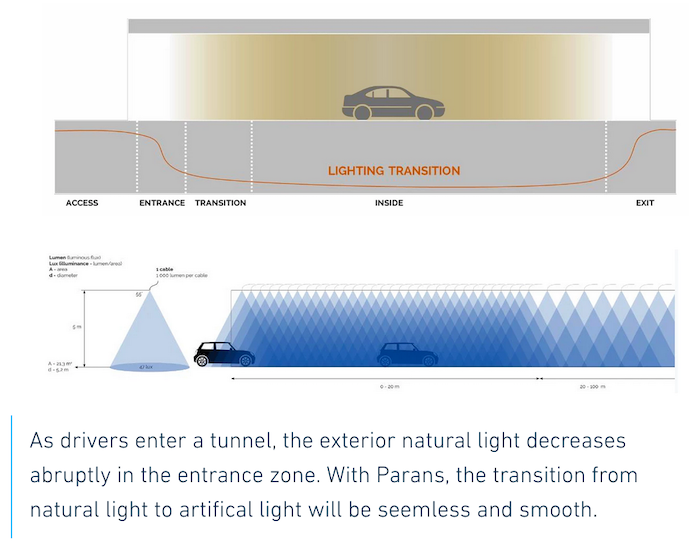
LU: Regarding the lighting strategy for the tunnel, what sort of design or layout for the luminaires are you using?
We are clustering about 20 cables of light into each luminaire and fading the cables out as they move from the entrance where the light is more intense. It’s a fading design where the luminaire proximity decreases as you enter the tunnel to adjust for the transition.
LU: That is really cool. Like, really cool!
Yep! There’s a lot of interesting engineering aspects- we need to make sure that the cables are installed in a solid way where they are waterproof and sealed off. It’s a different way of approaching the implementation of our product as opposed to an ordinary building.
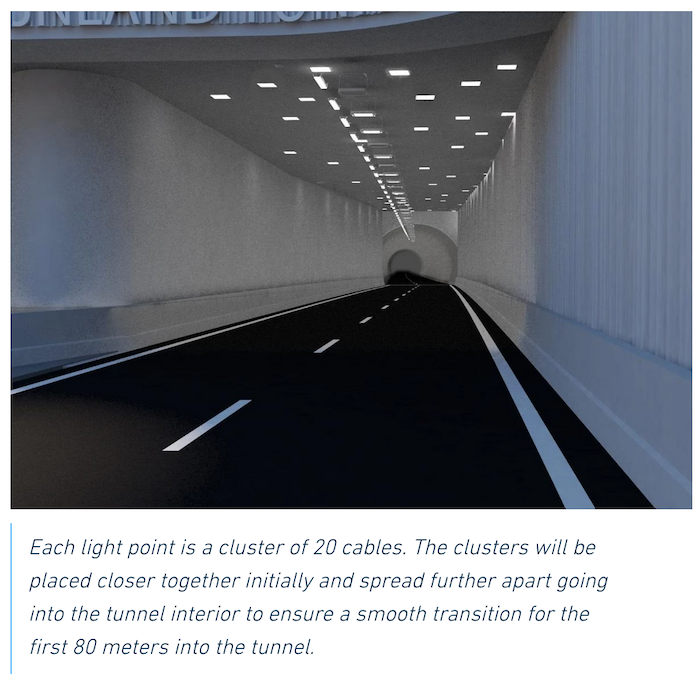
LU: What are your energy goals for this project?
The project is looking at reducing long-term energy consumption. Being an infrastructure project, they’re looking to keep and maintain the tunnel for quite some time- we’re talking 20+ years. Based on their calculations, the use of natural daylight will save between 3% and 10% in terms of energy.
LU: So, what stage is the project currently at?
We have completed a mock-up site, where we have installed our technology. Being a big infrastructure project, they are testing everything to ensure that it will work when we move into the final implementation and construction. So far, everything is going very well. We are starting off with the deliveries early next year and will complete our portion of the tunnel at the end of next year.
LU: How are the collectors being placed in this project?
We’ve been working closely with key stakeholders- specifically on the landscape architectural side. They are very committed to making sure that our Parans sun collectors are placed in such a way that they aren’t visible to people walking by or obstructing any views. Together, we were able to find a place further away from the tunnel entrance, where we could build up a completely new area for all the collectors to be placed. We also painted the collectors to ensure that they blended into the surrounding environment.
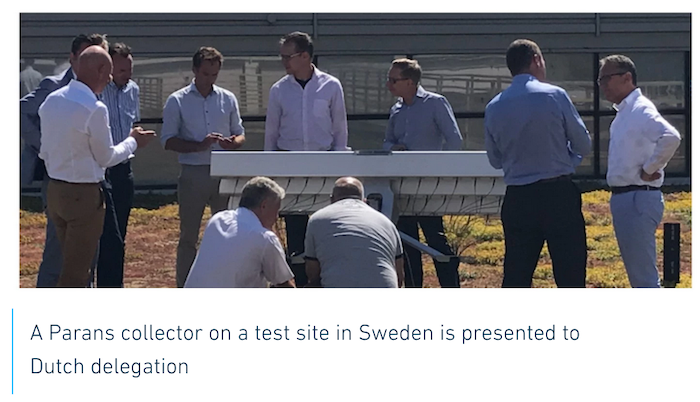
LU: What is the lifespan needed for a project like this?
For infrastructure projects like this, our clients require between 15-20 years of lifespan. This is manageable because Parans is really built to last. We ensure that Parans can work and withstand whatever climate conditions it faces- be it hot, cold, rainy, or humid. We’ve seen our installations succeed in extremely hot countries like the Middle East, where temperatures can hit 50 to 60 degrees celsius (122 – 140 Fahrenheit) to extremely cold places, like our installation in Mankato, Minnesota.
LU: So, given the success of Parans here in an infrastructural project, what other application possibilities do you see on the horizon?
I think the Rijnlands Tunnel really opened our eyes to the possibilities of infrastructure and accelerated our thinking towards that sector. We see tunnels, aqueducts, bike lanes- these large engineering infrastructure projects as great applications for Parans. We’ve been involved in many discussions and other projects around other subterranean constructions like Metro Stations. Those are particularly interesting because there are so many different spaces with different uses within those stations: waiting areas, ticketing offices, pedestrian tunnels, and stairs. Even though they are located deep underground, we spend quite a lot of time commuting. If we can bring natural daylight to those areas, it would greatly impact those spaces’ occupants and users. It would make a much better experience overall.
LU: Well, Fredrik, thank you so much for sharing with us! We really appreciate it!
Of course! Thank you and take care!